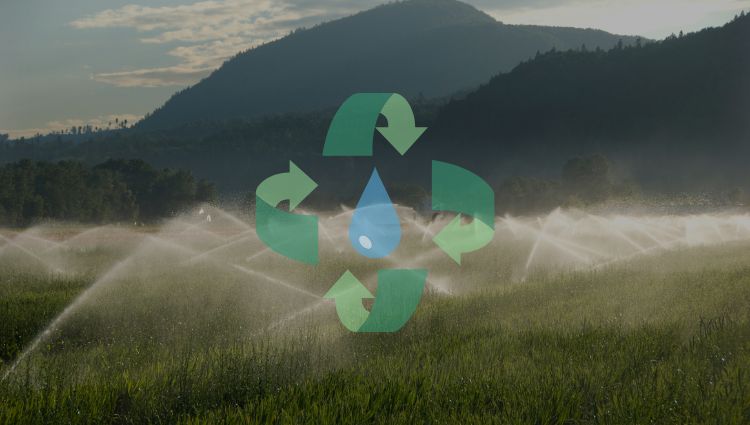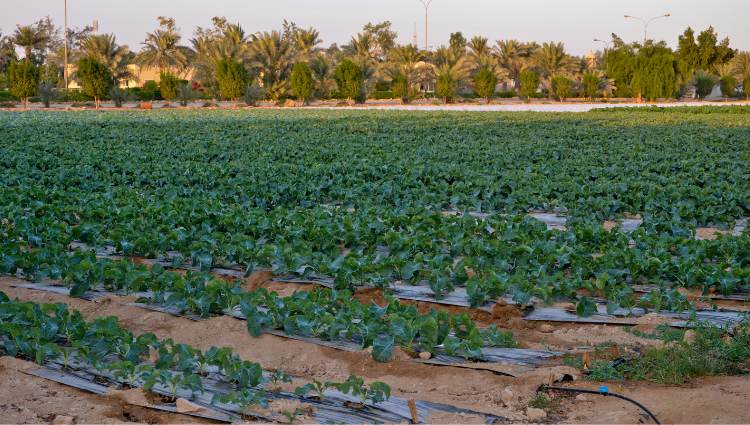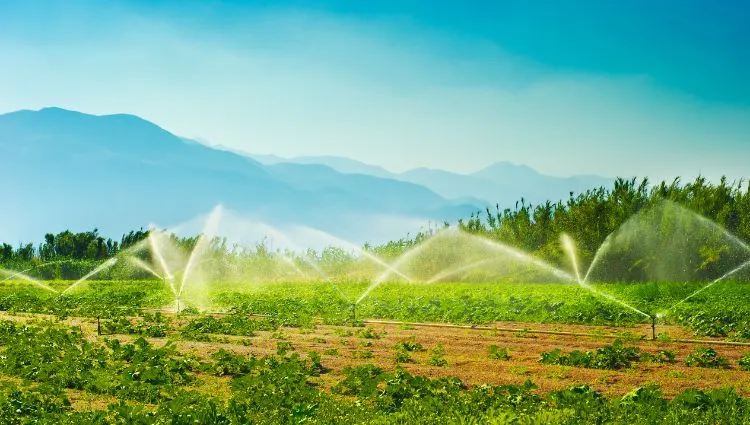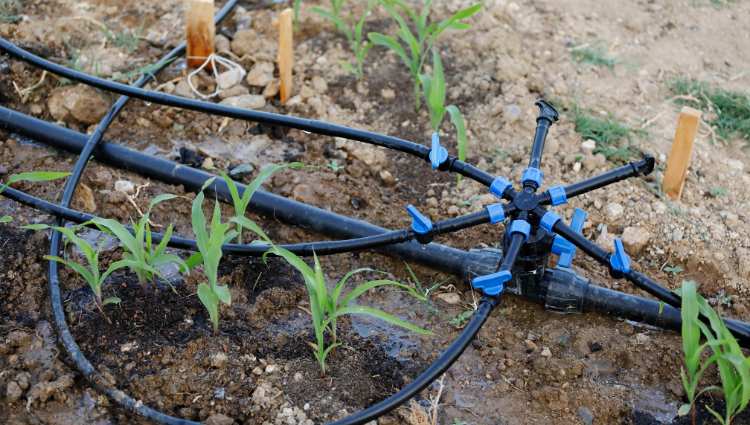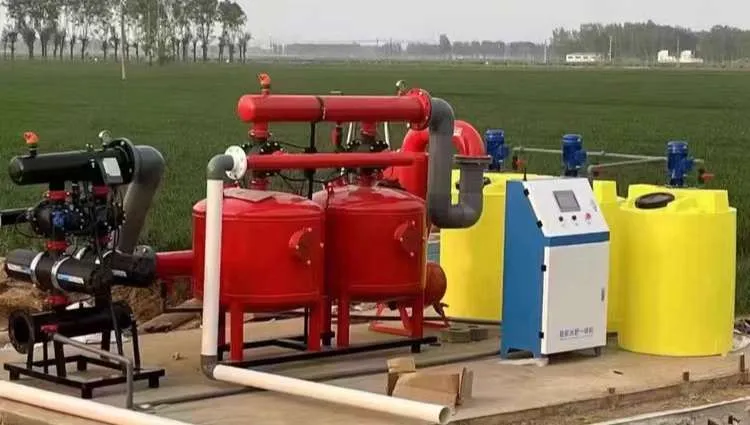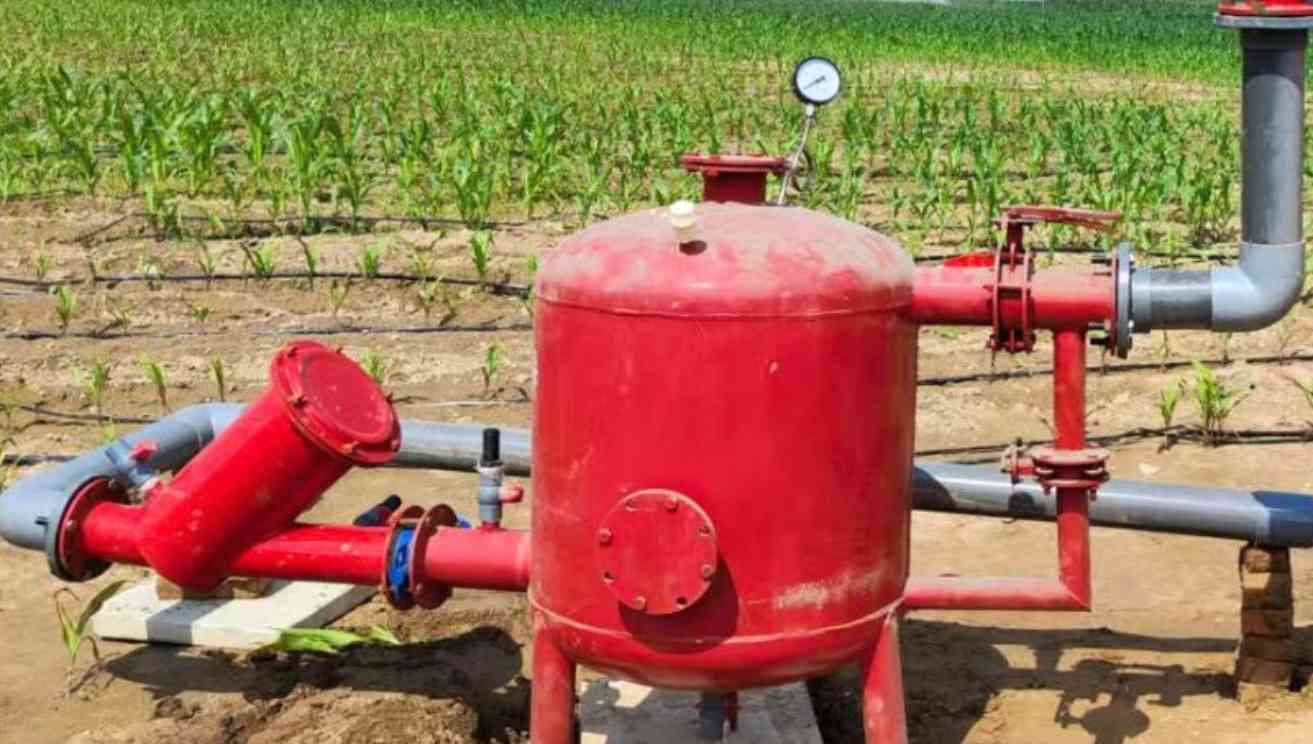Table of Contents
What Is a Drip Irrigation System?
With the gradual development of modern agricultural technology, irrigation methods are also being continuously improved. I divide the emerging irrigation methods into two main categories: sprinkler irrigation and micro-irrigation. Within micro-irrigation, it can further be divided into drip irrigation and micro-sprinkler irrigation. Today, we will mainly talk about drip irrigation and how it conserves water.
As the name suggests, drip irrigation is a method of irrigating by dripping water, and it is the most efficient and water-saving method among all irrigation techniques. This method is typically used in arid regions and for crops that have higher water requirements, such as blueberries. Its working principle is to transport water through pipelines to areas near the crops, and then precisely deliver water to specific irrigation spots (usually close to the plant’s roots or nearby soil) through devices such as drippers, drip arrows, drip irrigation pipes, and drip tapes. This way, the crops receive just the right amount of water they need with the least and most appropriate amount of water.
How Water-Saving Is the Drip Irrigation System?
We always say that the drip irrigation system is the most water-saving method, but how much water does it actually save? In fact, we can understand it clearly by comparing it with other irrigation methods.
Theoretically, the water use efficiency of a drip irrigation system can approach 100%, because it directly drips water into the soil where the plant roots are located. There is even a type of drip irrigation called subsurface drip irrigation, which can further reduce water loss.
We can compare drip irrigation with traditional irrigation methods. In a certain cotton plantation project, when the traditional irrigation method was upgraded to drip irrigation, the water use efficiency increased by about 50%. In an orchard project, the sprinkler system could improve water use efficiency by about 40%, while the drip irrigation system could increase it by about 50%.
Of course, different terrains, soil conditions, and types of crops may cause variations in the water-saving data of different irrigation methods. But overall, we can see that in terms of water use efficiency, drip irrigation systems > sprinkler systems > traditional irrigation.
At present, it is not an exaggeration to say that the drip irrigation system is the most water-saving irrigation method.
How Does Drip Irrigation Conserve Water?
From the previous text, we have already learned that the irrigation system is very water-saving. So why is it able to save so much water? Next, I will explain it to you one by one.
1. Precise Irrigation
Drip irrigation can achieve the highest level of precise irrigation because it can directly drip water into or near the soil around the crops. This greatly reduces the irrigated soil area, so a lot of unnecessary soil that does not need irrigation will not occupy water resources. At the same time, no water will accumulate on the soil surface, which reduces the evaporation rate of water and thereby improves water use efficiency.
2. Flow Rate Adjustment
Traditional irrigation methods directly irrigate water into the soil and usually cannot adjust the water volume. But drip irrigation is different. It can adjust the water flow rate, allowing water droplets to slowly drip into the soil, truly ensuring that every drop of water can be effectively utilized.
3. Integration of Water and Fertilizer
The drip irrigation system delivers water to the irrigation area through pipelines. In this process, water-soluble fertilizers can also be added, allowing water and fertilizer to drip simultaneously. This improves the overall utilization rate of both water and fertilizer, efficiently and reliably ensuring the growth of crops.
4. Improvement of Crop Growth Environment
The drip irrigation system can precisely drip water into the soil, instead of sprinkling water into the air like sprinkler irrigation. This method not only avoids water evaporation but also reduces the humidity in the air, effectively lowering the possibility of bacterial growth and reducing the risk of pests and diseases. It plays a significant role in promoting crop growth.
5. Protection of Soil Structure
The drip irrigation system is a gentle irrigation method. It does not impact the soil and can protect the soil structure from damage, maintaining the soil’s air permeability and water permeability, and reducing soil erosion. This protection of soil also plays a positive role in conserving water resources.
6. Intelligent Drip Irrigation
There are also many intelligent devices in drip irrigation systems that can help the system operate more efficiently, improving irrigation efficiency while also enhancing water-saving effects. For example, timers can be used to control irrigation times; soil moisture sensors can detect soil moisture conditions; electric valves, solenoid valves, and other types of valves can intelligently control water flow. These devices can accurately and efficiently manage the drip irrigation situation.
7. Strong Adaptability
Traditional irrigation methods are sometimes restricted by terrain and environmental conditions, but the drip irrigation system has excellent adaptability. No matter what kind of terrain or climate environment, a suitable drip irrigation plan can be reasonably designed to solve the crop irrigation problem. This flexibility also helps to avoid unnecessary water resource waste.
A Bit More to Add
We already know that drip irrigation has many advantages, but as with everything, there are also some shortcomings. In the case of drip irrigation systems, although they are the most water-saving irrigation method, their cost is higher than other irrigation technologies. In addition, they have relatively high requirements for water sources. If the water contains too many impurities, it may cause blockages, so filters are needed to remove impurities. Proper maintenance is also necessary, otherwise it may affect the growth of crops.
Therefore, we recommend that drip irrigation systems be scientifically and reasonably monitored and managed. Only in this way can their water-saving effect be maximized.
Conclusion
In this article, I introduced the water-saving principles of drip irrigation systems. Although it does have some shortcomings, overall, it still holds a very important position in modern water-saving irrigation technologies. Moreover, I believe that with the improvement and widespread application of intelligent irrigation technology, drip irrigation systems will surely achieve remarkable accomplishments in enhancing irrigation efficiency and water-saving performance.
Finally, allow me to briefly introduce our company. Rainfaun is an irrigation equipment manufacturer and exporter headquartered in China. We have developed a variety of products in the field of drip irrigation, such as drip irrigation valves, drip irrigation fittings, driplines, drip tapes, drippers, arrow drip stakes, filters, valves, pipes and fittings, timers, venturi fertilizer injectors, and so on. You can learn more about our company and products through this website. If you have any questions, you are also welcome to click here to contact us.
Thank you for your patience in reading this article! I hope it has been helpful to you.
Author: Allen and Michael
Editor: Michael
Content Reviewer: Michael

